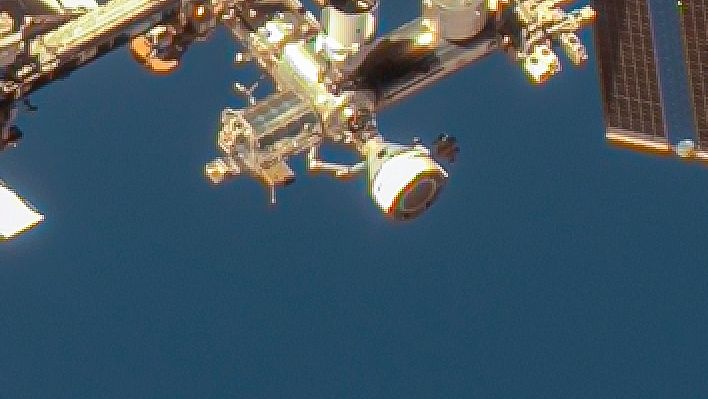An Earth-observing satellite has given us a unique view of Boeing’s new Starliner astronaut taxi in space.
Starliner arrived at the International Space Station (ISS) on June 6, delivering NASA astronauts Butch Wilmore and Suni Williams to the orbiting lab on a shakeout cruise known as Crew Flight Test (CFT).
A day later, Maxar Technologies’ WorldView-3 satellite snapped a striking photo of the ISS and its new arrival, which is prominently featured near the center of the frame.
WorldView-3, which launched in August 2014, usually observes Earth from its vantage point 385 miles (620 kilometers) above our planet. But the new photo shows that the spacecraft can study objects in orbit as well.
“This type of imagery collection, known as non-Earth imaging (NEI), is a breakthrough capability that enables Maxar to support critical space domain awareness missions for government and commercial customers,” Maxar wrote in an X post on Wednesday (June 12) that featured the ISS-Starliner photo.
Non-Earth imaging could become a higher and higher priority for the U.S. government and other entities with a large stake in the final frontier over the coming years.
The number of satellites going to orbit has jumped dramatically recently and will likely continue to grow, largely due to the rise of megaconstellations such as SpaceX’s Starlink broadband network, which currently consists of more than 6,000 active spacecraft. Keeping tabs on this ever-growing orbital population will likely become increasingly important, and increasingly challenging, for satellite operators.
CFT is the first-ever crewed mission for Starliner, which is scheduled to come back to Earth no earlier than June 18. If all goes well on the mission, the capsule will be certified to fly long-duration astronaut missions to and from the ISS for NASA.
SpaceX already does this with its Crew Dragon capsule and Falcon 9 rocket. Elon Musk’s company is in the middle of its eighth operational astronaut flight to the ISS, known as Crew-8.

Dr. Thomas Hughes is a UK-based scientist and science communicator who makes complex topics accessible to readers. His articles explore breakthroughs in various scientific disciplines, from space exploration to cutting-edge research.








